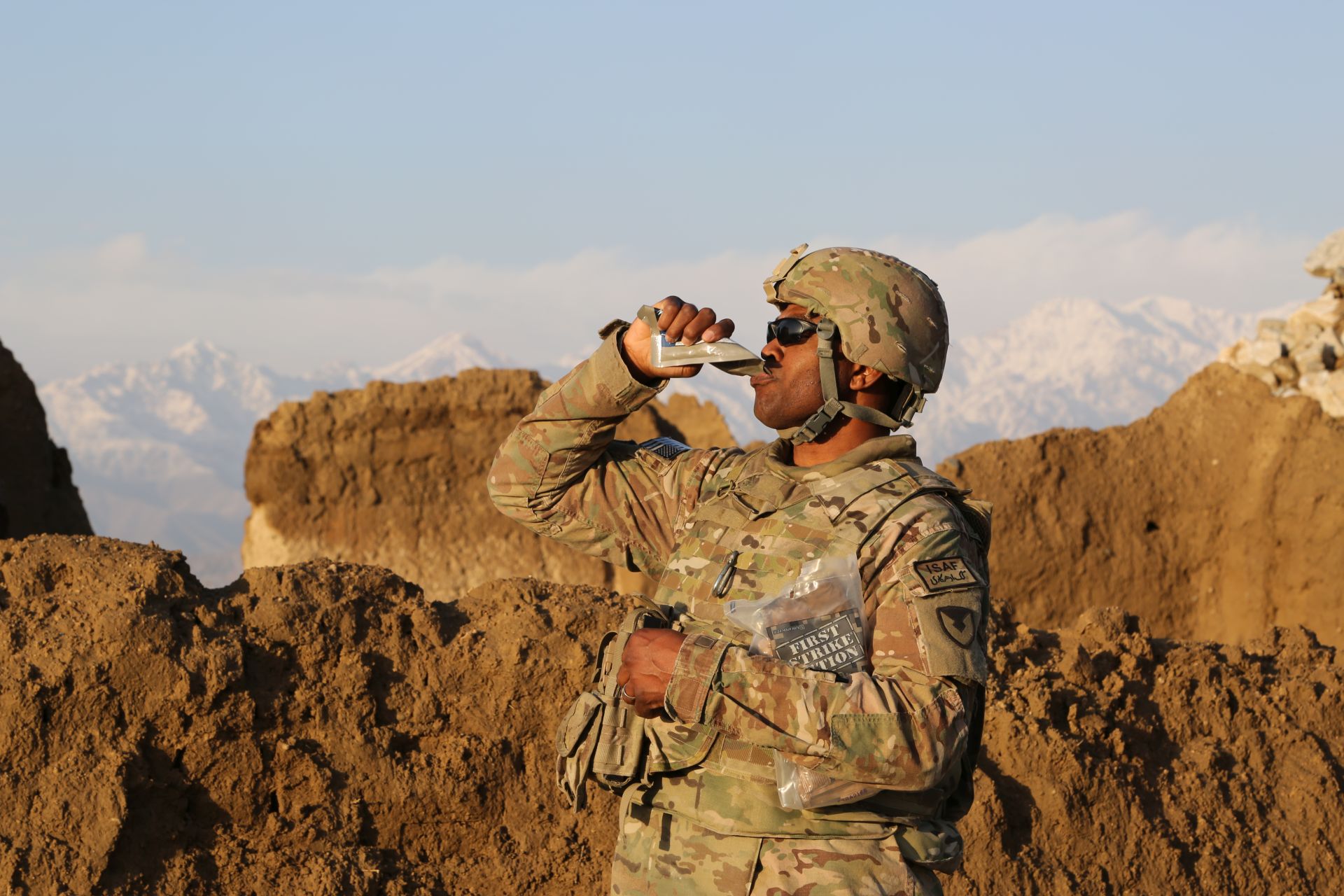When Soldiers rip open meals, ready-to-eat, also known as MRE, in a combat zone, most people probably are thinking more about flavor and filling their stomachs than about the nutrition.
However, that does not mean nutrition is not important. The new online combat rations database, or ComRaD, formally launched earlier this month by the Department of Defense’s Human Performance Resource Center, or HPRC, provides warfighters, military dietitians, food service officers and leaders the opportunity to learn more about the nutritional value of what is inside those packages.
ComRaD is the result of a collaborative effort between HPRC, the Natick Soldier Research, Development and Engineering Center, also known as NSRDEC, and the U.S. Army Research Institute of Environmental Medicine, or USARIEM, at Natick Soldier Systems Center. The database contains nutrition information about the MRE, First Strike Ration, Meal, Cold Weather, and Food Packet, Long Range Patrol.
Before ComRaD, military customers needed to contact experts at NSRDEC’s Combat Feeding Directorate, or CFD, to obtain accurate nutritional information. The lack of public access to this information has left customers to obtain nutritional information from alternate sources that are sometimes unreliable and inaccurate.
Today’s increased emphasis on performance nutrition in the military provided the boost needed to get the website up and running.
“Military dietitians expressed a need for publicly available nutrition information that could be used to help educate warfighters on how to properly fuel themselves before a mission, during a mission and post mission,” said Julie Smith, senior food technologist with the CFD.
In the past, one had to rely on the nutrition fact labels provided on the food component packages to have any idea what was in them. Holly McClung, a research dietitian at USARIEM, said those labels are not always accurate.
“That’s why the website’s so important,” McClung said. “That’s where we want the warfighter and the dietitians to go to, because we know that the nutrition info is accurate and up to date.”
How does McClung know this?
“The nutrition information that feeds into the database comes from actual chemical analysis of the food component,” McClung said. “That’s … where USARIEM came in. We funded the chemical analysis of food components in the 24-menu MRE and other ration lines, which is difficult, expensive and time consuming.
“This is why it’s taken us so long to complete the process. At this website, the user will be able to get nutrition on every individual component, the composition of complete ration lines, and individual MRE menus that are 100-percent chemically analyzed, so we feel confident in the nutritional data.”
A quick look at the website would seem to reveal that warfighters are consuming too many calories and that their intake of ingredients such as sodium is too high. The numbers are deceiving, however.
“A civilian might look at what the energy needs are for a warfighter, or look at how much is provided in a ration, and think the rations are providing too many calories and/or fat, et cetera,” McClung said. “What they have to realize is that the rations are constructed to meet the energy and nutritional needs of physically active warfighters. So, while there may be excessive energy available in the ration for a Soldier sitting at a desk, the ration may just meet the requirements of a physically active Soldier (who is) on (his or her) feet for a 12-hour patrol.
“That’s why we hope the warfighter will use the website, as it will help them to figure out how many calories they need and guide them to make good decisions on what they should be choosing to eat,” McClung said.
Combat Feeding developed the ComRaD website in collaboration with HPRC, but it is hosted by HPRC.
“Part of their mission is to educate the warfighter,” said Smith of HPRC. “Their website provides warfighters and their families with a one-stop clearinghouse for evidence-based information and key resources in all aspects of performance to achieve total fitness and, ultimately, human performance optimization.”
The ComRaD website will change over time, Smith said.
“We’re already working on … additional features to the website that will provide ComRaD users with Unitized Group Ration nutrition information, as well as a cart feature that will allow users to track what they have eaten by adding and removing ration components in order to view their overall daily nutritional intake.
“I think that it will be an evolving website [with] future improvements based upon the feedback that we get from users,” said Smith, adding “which is really going to be invaluable.”
For more information about ComRaD, email [email protected].










